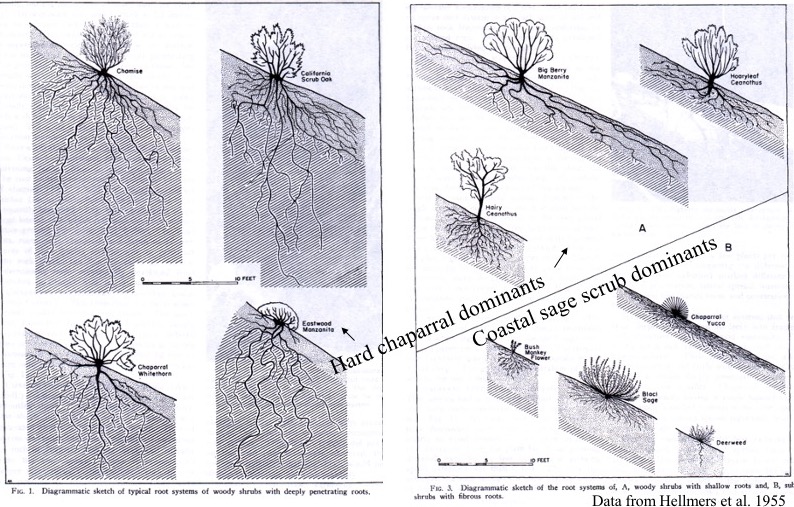Differences in rooting depth
A less obvious difference between the dominant shrubs of CSS and those of chaparral is the difference in rooting depth.
Shrubs and subshrubs of CSS tend to be much more shallowly rooted than shrubs of chaparral. Rooting profiles, studied along roadcuts and faces of gullies in the 1950s illustrate this difference. Although chaparral shrubs vary in rooting depth, many are quite deeply rooted. In contrast, the dominants of coastal sage scrub, such as the black sage (Salvia mellifera) have fairly shallow roots.

This difference affects how the shrubs see the summer drought:
The deeper-rooted chaparral dominants have access to supplies of water stored deeper in the soil profile throughout the summer. This allows them to supply some water to their leaves during the summer. This allows the leaves to remain alive through the drought, permitting an evergreen habit.
In contrast, shallowly rooted shrubs and subshrubs experience a stronger drought during the summer. They can only access the upper layers of soil that dry earlier and more thoroughly in the spring and summer. The strategy that works for these plants is to drop their larger leaves during the summer, reducing evaporative demand and water stress in the plant.
[Note: When we talk about plant "strategies", we do not mean that plants think ahead. In this context, a "strategy" is a set of traits or responses that work together to benefit the plant. In this case, a plant can be either deeply-rooted or shallowly-rooted in a mediterranean-type environment, but it can't be both shallowly rooted and evergreen. The leaf traits and rooting habits have to work together.]